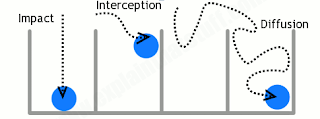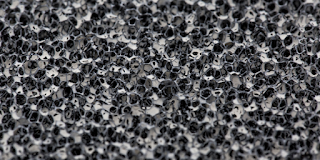How do HEPA air filters work?
How do HEPA air filters work?
We tend to think of air pollution as something that happens outside—but that's not always the case. Even inside your home, there are things like dust mites and dirt trodden in from outdoors to worry about. Indoor air pollution from sources like this can irritate your lungs and contribute to allergies and asthma. The trouble is, if you use an ordinary vacuum cleaner, you might simply be "rearranging the dirt": your cleaner will trap some of the dust inside the bag or cyclone filter but let the rest pass straight back into the room. If you suffer from asthma or another breathing difficulty, you may find a HEPA (sometimes defined as "high-efficiency particulate air," sometimes as "high-energy particulate arresting") air purifier (or a vacuum with a HEPA filter) well worth the investment. Let's take a look at how they work.
How HEPA filters work to trap dust and dirt
The simplest kind of filter is a sieve: something with holes that are big enough to trap some particles and small enough to let others through. Some vacuum cleaners do use filters like this to stop bigger particles of dust and dirt—but how do you catch smaller dirt particles as well? You could make a very fine filter or you could put several filters on top of one another, but in a vacuum cleaner they would clog up very quickly and stop the machine from working. Not only that, you'd need a more powerful electric motor to pull the air through the machine, and it would use more energy and cost more to run.
HEPA filters in vacuum cleaners tend to use two quite different mechanisms to clean the airstream. First, there are one or more outer filters that work like sieves to stop the larger particles of dirt, dust, and hair. Inside those filters, there is a concertina of what looks like folded paper designed to trap the smaller particles. The paper is actually a mat of very dense glass fibers and, unlike the gauze, it doesn't simply filter out small dust particles like a sieve. Instead, it uses three different mechanisms to catch dust particles as they pass through in the moving airstream. At high air speeds, some particles are caught and trapped as they smash directly into the fibers, while others snag on the fibers as they try to brush by. At lower air speeds, dust particles tend to wander about more randomly through the filter (a process known as Brownian motion after its discoverer, Scottish botanist Robert Brown) and may stick to its fibers as they do so. Together, these three mechanisms allow HEPA filters to catch particles that are both larger and smaller than a certain target size.
The fibers in HEPA filters (shown here as gray bars) trap dust and dirt particles in three ways. Some particles crash into filter fibers and are absorbed by impact. Some are caught as they flow along in the moving airstream, move too close to a fiber and are trapped by interception. At lower air speeds, some are trapped by diffusion (when randomly moving dust and air particles crash into one another and some are pushed into the filter fibers).
HEPA was originally developed by the nuclear industry to help clean up dangerous, radioactive particles. Fortunately, most of us don't have to deal with such things—but HEPA filtration is still very useful and important in factories and workplaces, especially in environments where dust is produced as part of the manufacturing process.
Olansi Air purifier all use Hepa filter. High efficient and remove the particles to 99.99%.Currently we develop many kinds of air purifier models.
For more info. Pls visit us www dot olansigroup dot com.


评论
发表评论